Unlike many lessons with “priesthood” emphasis, this lesson includes the key element of the “human family.” I like this; as a result, the lesson can take some non-traditional directions such as a focus on family history or a focus on humanitarian services of the church or even an emphasis on baptism as rebirth. Because of the “human family” element, this lesson has better applicability than average priesthood lessons.
However, I also suffer from a personal history of disengagement from any lesson with priesthood focus. As a Young Woman, I was taught that I could “help the priesthood” by dressing modestly. As a Young Single Adult, I was taught that the best thing I could do was marry someone with the priesthood so I could finally “have” priesthood in my life. As a married woman, and recognising that these previous teachings were improper, I still often feel disengaged from priesthood lessons because outside of the temple, I am unable to render any priesthood service. This, mixed with varying levels of sometimes well-intended, other times satirical, yet often misogynistic lesson plans usually results in me finding some reason to sit in the church foyer commisserating with a dozen other women for the term of the lesson. I think the best way to direct away from this line of thinking is to write “Salvation of the Human Family” on the board. This is not intended to erase priesthood, but rather to direct the lesson in a manner relevant to women, thereby engaging them, rather than writing “priesthood”, which by experience, can automatically disengage women
To start:
What do you think of when you consider the phrase “human family”?
How can the priesthood benefit the “human family”?
When we attend the temple, do we allow for those who have passed (i.e. the human family) to receive preisthood ordinances? How does this bless you in return?
When we enlist in international humanitarian services, how are we furthering the purpose of priesthood, even if absent of ordinances?
From the manual:
Lorenzo Snow was called on a mission to Italy. Anti-Mormon literature had been dispersed in the area prior to his arrival, so he felt inspired for a time to prepare the people in meekness, rather than in outright proselyting. He and his mission companions found themselves in an area with a group called the Waldenses, who were devoted to New Testament teachings. (you may summarise the story, or read the section from the manual) :
The Waldenses’ feelings about the Church began to change significantly after Elder Snow administered a priesthood blessing to a boy who had become very ill. Elder Snow wrote the following in his journal:
“Sept. 6th.—This morning my attention was directed to Joseph Guy, a boy three years of age, the youngest child of our host. Many friends had been to see the child, as to all human appearance, his end was nigh at hand. I went to see him in the afternoon: death was making havoc of his body; his former healthy frame was now reduced to a skeleton, and it was only by close observation we could discern he was alive.”
Troubled by the opposition to the preaching of the gospel and concerned about little Joseph Guy, Elder Snow turned to the Lord for help that evening. He later recalled: “For some hours before I retired to rest, I called upon the Lord to assist us at this time. My feelings on this occasion will not be easily erased from memory.
“Sept. 7th.—This morning, I proposed … that we should fast, and retire to the mountains, and pray. As we departed, we called and saw the child; his eyeballs turned upwards: his eyelids fell and closed: his face and ears were thin, and wore the pale marble hue, indicative of approaching dissolution. The cold perspiration of death covered his body, and the principle of life was nearly exhausted. Madame Guy and other females were sobbing, while Monsieur Guy hung his head.” Whispering to Elder Snow and the other missionaries, Monsieur Guy said, “He dies. He dies.”
Elder Snow continued: “After a little rest upon the mountains, aside from any likelihood of interruption, we there called upon the Lord in solemn prayer, to spare the life of the child. As I contemplated the course we wished to pursue and the claims we should soon advance to the world, I regarded this circumstance as one of vast importance. I know not any sacrifice which I could possibly make, that I was not willing to offer that the Lord might grant our requests.”
When they returned to the Guy family that afternoon, Elder Snow gave Joseph a priesthood blessing. They went to see the family a few hours later, and Joseph’s father, “with a smile of thankfulness,” told them the boy was much better.
“Sept. 8.—The child had been so well, the parents were enabled to betake themselves to rest, which they had not done for some time previous. To-day, they were enabled to leave him, and attend to their business.” When Joseph’s mother expressed her joy at the boy’s recovery, Elder Snow responded, “The God of heaven has done this for you.”
“From that hour he began to amend,” recounted Elder Snow, “and with a heart filled with gratitude to our heavenly Father, I am happy to say, that in a few days he left his bed, and joined his little companions.”
Snow felt like this action prepared the people to hear the gospel. How do you think this this also prepared Snow and his missionary companions to teach the gospel?
In this time period, it is important to recall that women also offered blessings, as taught by Joseph Smith:
Sister Eliza R. Snow Smith, from the Prophet Joseph Smith, her husband, taught the sisters in her day, that a very important part of the sacred ordinance of administrating to the sick was the sealing of the anointing and blessings, and should never be omitted. And we follow the pattern she gave us continually. -Louisa “Lula” Greene Richards (Newell, The Historical Relationship of Mormon Women and Priesthood)
Women maintained this authority until 1946, when Joseph Fielding Smith revoked the authority from women in the church. (See Derr, Cannon, Beecher, Women of Covenant, 220-21.) Though this authority to give blessings of comfort and healing is formally revoked from us at this time, we can still offer prayers on behalf of those who are ill or need comfort (you may note, if you are comfortable and the spirit directs, that many Mormon women still offer private blessings upon children and family members. If you have an experience of this, this could be an appropriate time to share it, as directed by the spirit).
Have you ever offered to pray from someone not of our faith? How does this bless you, as the person offering the prayer? How does offering a blessing of healing serve the person offering the blessing as well as the person receiving the blessing? (I have on a number of occasions for friends and family members; I have never had a negative response from anyone when I have offered to pray for them or their health. If you have a positive experience of offering a prayer for someone who is not LDS, this could be a time to share it, or invite others to share their experiences in praying for those not in our faith/ in the human family.)
In consideration of the influence of women and how we as women can direct, instigate and bless the human family, I like the story of Esther. You may read and summarize, or ask someone else to summarize the story of Esther. My very short synopsis:
Esther pleases king Ahasuerus and becomes his wife. A plot is hatched by Haman, a man in the king’s court, to exterminate all of the Jews—something he has 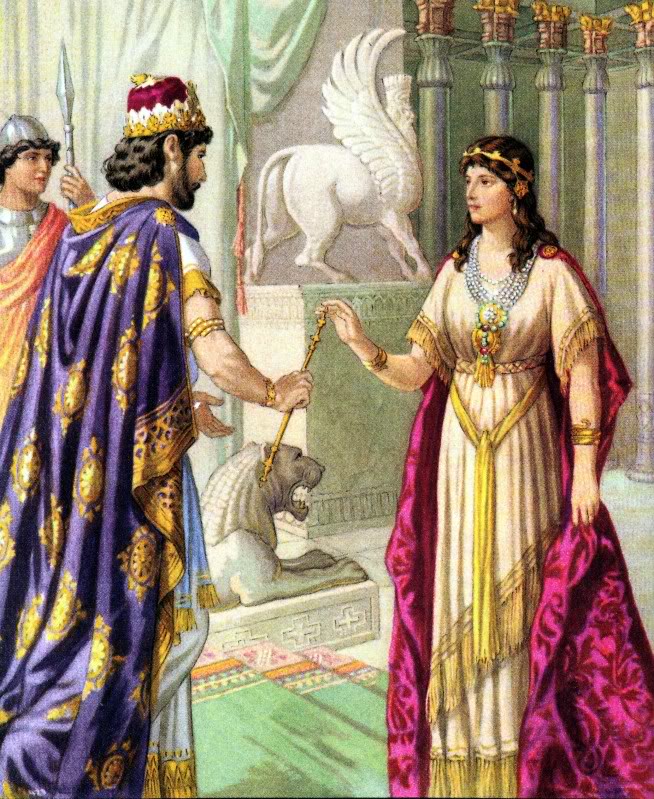 done because he desires dominion, and hates that Mordecai, Esthers’ cousin (who has raised her like a father) did not bow to him (Haman). Ahasuerus does not know Esther is a Jew. Esther tells Mordecai to have the Jews fast with her for 3 days so she may directed in a way to save the Jews. At the close of the 3rd day, Esther goes to Ahasuerus, an action she could be killed for. He receives her and accepts her invitation to two banquets. He and Hamman attend both banquets. At the second banquet, Esther reveals she is Jewish and that Haman is planning to exterminate her people. Ahasuerus leaves the room; but Haman remains to beg Esther for his life. Ahasuerus returns and believes Haman is assaulting Esther; in this, he orders the death of Haman. The previous decree against the Jews cannot be annulled, but the king allows the Jews to defend themselves on the date of the attack. On the day, five hundred attackers and Haman’s ten sons are killed in Shushan. Ahasuerus remains a powerful king and places Mordecai in a prominent political position (it is important to note that Esther is queen, therefore also in a powerful political position).
done because he desires dominion, and hates that Mordecai, Esthers’ cousin (who has raised her like a father) did not bow to him (Haman). Ahasuerus does not know Esther is a Jew. Esther tells Mordecai to have the Jews fast with her for 3 days so she may directed in a way to save the Jews. At the close of the 3rd day, Esther goes to Ahasuerus, an action she could be killed for. He receives her and accepts her invitation to two banquets. He and Hamman attend both banquets. At the second banquet, Esther reveals she is Jewish and that Haman is planning to exterminate her people. Ahasuerus leaves the room; but Haman remains to beg Esther for his life. Ahasuerus returns and believes Haman is assaulting Esther; in this, he orders the death of Haman. The previous decree against the Jews cannot be annulled, but the king allows the Jews to defend themselves on the date of the attack. On the day, five hundred attackers and Haman’s ten sons are killed in Shushan. Ahasuerus remains a powerful king and places Mordecai in a prominent political position (it is important to note that Esther is queen, therefore also in a powerful political position).
How did fasting by Esther and the Jews help Esther to prepare to address Ahasuerus?
How did fasting help Lorenzo Snow to prepare to bless “little Joseph” in Italy?
How did this help prepare the people in both cases to receive righteous influence?
Esther is considered a prophet in Jewish thought. Do you see Esther as a prophet as well?
“Fasting is much more than abstinence from food and drink, though it may begin there, as a preparation for true observance of the principle of fasting, that is, of hungering and thirsting after righteousness.” (see also Doctrine and Covenants 59:9-19, and note for verse 13) – Arnold, Clothed with Charity: Talks from the 1996 Women’s Conference
Is fasting a priesthood ordinance? (i.e. is there spiritual authority in fasting?) Some thoughts on fasting that I quite like are here.
Now, think about the ordinance of baptism. After we are baptised, we also receive the gift of the Holy Spirit. From the manual:
Any (wo)man who will humble (her)self before God and will be immersed in water, after repentance, for the remission of his sins, shall receive, through the laying on of hands, the gift of the Holy Ghost. Can I give this to h(er)? No, I, simply as a messenger of the Almighty to whom has been delegated authority, administer immersion for the remission of sins; I simply immerse h(er) in water, having authority so to do. I simply lay my hands upon h(er) for the reception of the Holy Ghost, then God, from his presence, acknowledges my authority, acknowledges that I am his messenger, and confers the Holy Ghost upon the individual.
It is clear here that Snow did not think that presithood was something he posessed; he declared himself a messenger with authority. When we take the Holy Ghost upon us, we can be messengers to do the work of God. How does the administration of the ordinance of the gift of the Holy Ghost help us to serve with authority? Emphasise the fact that ALL women can receive inspiration and direction, and because of this should act upon the spirit, regardless of the absence or presence of men. (this is a previous lesson plan addressing this point)
From the manual:
For this very purpose the Holy Priesthood has been bestowed in this our day, to guide and perfect the saints of God here, and just in proportion as we attain to intelligence in this world and to integrity and faithfulness … , so will be the exalted condition in which we shall appear behind the veil.
How does the priesthood “guide and perfect the saints”?
The last section of the manual becomes problematic as Snow only uses masculine pronouns, and the selections are limited to males as “priesthood holders.” However, it is interesting to note that in this section he uses the phrase “do you duty.” 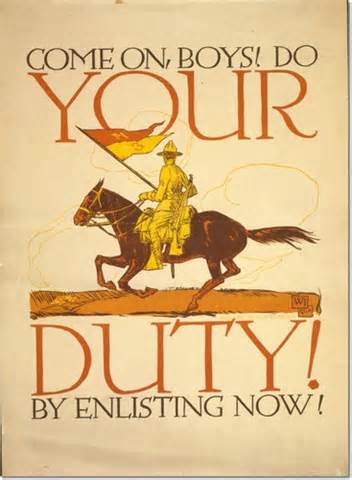 Those who are familiar with Scouts know this catch-phrase as a classic part of scout ideology, though it originated previous to the Boy Scouts. Before the international Boy Scout inception and movement of 1908 (1910 in the US), the Boys Brigade was developed as a Christian-militant organization for lads that would combine military drill and masculine/outdoorsy activities with Christian values. The Boys Brigade started in Scotland in 1883, but had become an international organization within a decade. The popularity of this concept, called Muscular Christianity was globally influential, and heavily relied on the theory that males (adults as well as children) had a duty of service to God and Country (or government). As a former teacher, and because the movement and its societal model were widely and heavily well-regarded, Snow would have been influenced by the dogma of the Muscular Christian movement. As such, this last section in particular reads as though a general were rallying his troops for battle. Though this makes for an interseting side discussion of Muscular Christianity’s influence in church culture, it really doesn’t truly address the doctrine of the priesthood.
Those who are familiar with Scouts know this catch-phrase as a classic part of scout ideology, though it originated previous to the Boy Scouts. Before the international Boy Scout inception and movement of 1908 (1910 in the US), the Boys Brigade was developed as a Christian-militant organization for lads that would combine military drill and masculine/outdoorsy activities with Christian values. The Boys Brigade started in Scotland in 1883, but had become an international organization within a decade. The popularity of this concept, called Muscular Christianity was globally influential, and heavily relied on the theory that males (adults as well as children) had a duty of service to God and Country (or government). As a former teacher, and because the movement and its societal model were widely and heavily well-regarded, Snow would have been influenced by the dogma of the Muscular Christian movement. As such, this last section in particular reads as though a general were rallying his troops for battle. Though this makes for an interseting side discussion of Muscular Christianity’s influence in church culture, it really doesn’t truly address the doctrine of the priesthood.
(One of the primary differences between the Boys Brigade and the later Boy Scouts is that the Boy Scouts did not favour Christianity above Judaism, Islam, or any religion; it squarely placed country first, and a non-denominational God second (see the original 1907 Scouting For Boys, p. 230). This, and the fact that founder of the Boy Scouts (Baden-Powell) hated military drilling, therefore nixed it from scouts, made the Boy Scouts into an even more popular global youth movement.)
But before I lay off the global cultural and historical side thought: In in general terms, what came of the women in this era was the institutionalized placing of women squarely in position to support men. The original Girl Guides (called Girl Scouts in the US) program awarded badges for those who could cook, iron and mend men’s clothes as well as perform basic first aid for war wounds, or skills gained in running a small farm should their fathers be called away to war. (Proctor, Scouting For Girls: A Century of Girl Guides and Girl Scouts, introduction) It seems to me that much of the language used in Priesthood lessons echoes this Muscular Christian-rooted ideology, which removes women to support positions. This does not truly address how priesthood is for the “salvation of the human family,” nor is it inclusive of women. Though I doubt you will include this information in your lesson, I think it is important for teachers to contemplate the worldliness of switching to the Muscular Christian position of lobbing women into one, big, “support” bunch, so you may avoid it. (I am now off my soapbox)
“In the temple, we sisters receive all of the blessings of the priesthood, not by ordination, but by being as fully endowed with the power of the priesthood as are the men. Both men and women wear the garments of the holy priesthood and make the same sacred covenants with God. They both perform priesthood ordinances, having authority to do so.”- Elaine L. Jack, Eye to Eye, Heart to Heart)
Does the endowment empower women with further light and knowledge? How can women use priesthood in the absence of men?
In this line of thought, I love the story of Ruth and Naomi. In summary: Ruth of Moab marries Mahlon. Orpha, also a Moabite marries 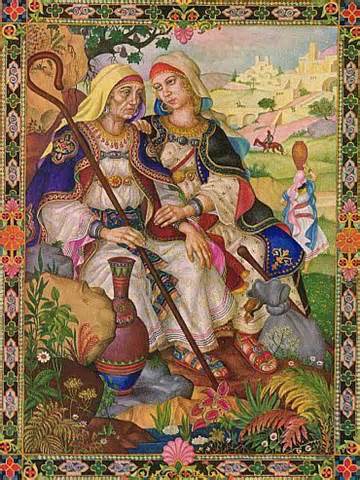 Chilion. Mahlon and Chilion are the sons of Naomi and Elimelech; they are Israelites. At this time, women cannot own property. With famine in the land, all of the men die. According to the laws of Levirate Marriage, if a married man should die, the dead man’s brother would marry the widow and raise a family to the dead man, meaning all children born in this covenant would be considered sons of the deceased first husband. The firstborn son to this union obtains the birthright and would inherit all the property and rights that should have been the deceased husband’s. The problem with Naomi, Ruth and Orpha is that all of the men are dead; they must marry and bear sons or face poverty.
Chilion. Mahlon and Chilion are the sons of Naomi and Elimelech; they are Israelites. At this time, women cannot own property. With famine in the land, all of the men die. According to the laws of Levirate Marriage, if a married man should die, the dead man’s brother would marry the widow and raise a family to the dead man, meaning all children born in this covenant would be considered sons of the deceased first husband. The firstborn son to this union obtains the birthright and would inherit all the property and rights that should have been the deceased husband’s. The problem with Naomi, Ruth and Orpha is that all of the men are dead; they must marry and bear sons or face poverty.
Naomi is too old or unable to have children, so she tells Ruth and Orpha to return to Moab so they can be remarried and thus be provided for, knowing this would leave herself destitute. Orpha leaves, but Ruth refuses to abandon Naomi. Ruth and Naomi travel to Bethlehem in order for Ruth to find work. I think this is important to note- Ruth had absolute strength and sense of spiritual authority and ownership of the family unit she was in at that moment in time; she knew Naomi would starve if left on her own, so Ruth took responsibility to remain with Naomi and find work. I think she believed that it would have been a sin of omission to leave Naomi, and that her righteous action would not only save Naomi, but would be a blessing to her as well.
In the end of the story, Naomi helps Ruth in a ritual that results in Ruth’s marriage to Boaz. Boaz recognises the situation that Ruth and Naomi are in, and says: “Ruth the Moabitess, the wife of Mahlon, have I purchased to be my wife, to raise up the name of the dead upon his inheritance, that the name of the dead be not cut off from among his brethren, and from the gate of his place: ye are witnesses this day.” It is my understanding in this , that Boaz declared it was Ruth’s chosen responsibility to ensure that her family (Naomi) was not destitute. This was not Boaz’s responsibility. In some Jewish traditions, the story is seen in multiple layers of spiritual devotion: Ruth providing for Naomi for her survival, then Boaz ensuring Ruth would complete the task, risking his own family lineage and property, in addition to the Ruth’s example of spiritual devotion to Naomi’s religion. (Ruth 4, 13-17)
Ruth did more than save Naomi from starvation; she gave Naomi a son, so that Naomi’s family line would continue. Rabbis use her story to show that true conversion is not judged by race, birth or ancestry, but by acceptance of God and the mitzvot (commandments).
How do Naomi and Ruth manifest devotion to the preisthood? (Ruth remained devoted to Naomi’s religion and would not forsake her- parallel to baptism and marriage ordinances and covenants)
How, as women, can we manifest truth and reinforce the influence of the priesthood in one another?
How does our support of our sisters bring priesthood, therefore “salvation to the human family”?
God has a view of women, who they are, what they do incomparably, and what eternally they will be. Women must seize that vision and embrace it, or they – and the human family with it- will perish. –Judy Dushku, Exponent II, Summer 1999, p. 5.
What work can you do to help bring the “salvation of the human family”?
Additional fabulous reads on past Exponent Priesthood lesson plans are here, here, here and here.
What are your thoughts on this lesson? How do you prefer to teach priesthood lessons to women?


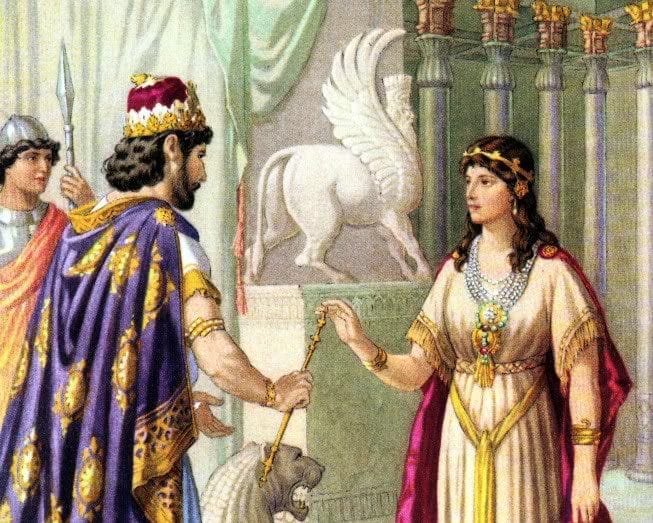
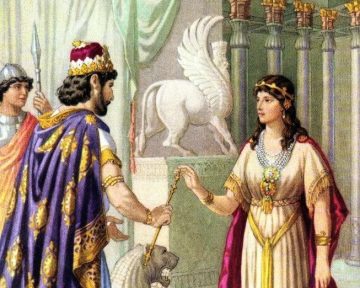


3 Responses
This is a fabulous lesson plan! I almost feel like I’ve gone to Relief Society myself after reading it, and it would be a wonderful lesson if it were presented this way. You’re absolutely right about the priesthood in the title thing. I’ve gotten to the point where I often just walk out when I realize that is the topic. Long experience has taught that those lessons will not really be about me, my life, my choices or my relationship with God.
Wonderful lesson. When you talked about offering to pray for people outside of our faith, it reminded me of the good example someone outside our faith set for my family once. My brother injured his ankle at a basketball game. my parents noticed someone in the audience watching who looked concerned. He finally decided to approach and told my parents he felt impressed to give my brother a blessing, with their permission. My parents agreed and he touched my brother’s leg and offered a prayer. I don’t think anyone in my family had ever experienced a healing blessing from someone outside the Mormon male priesthood, but they were touched and felt the Spirit confirm that the blessing would be honored.
That is beautiful, April. I strongly believe prayers offered in any faith are heard. When I was living in San Diego, I enjoyed visiting a local Buddhist Monastery, and often placed my name, and others’ names on the prayer roll there.